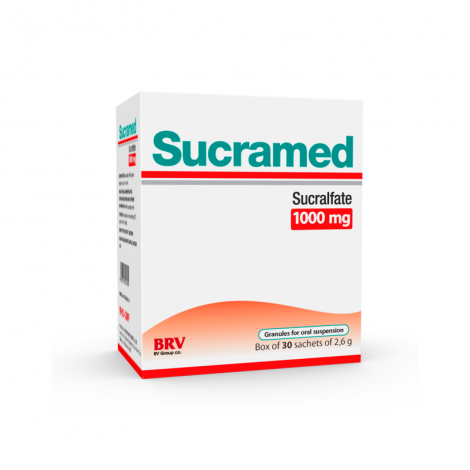Gastric ulcers:
Take 1 sachet, 4 times daily, within 4 to 6 weeks, i.e
- 1 sachet, 30 - 60 minutes before each 3 main meals,
- 1 sachet, after meal, before bedtime about 2 hours
Active duodenal ulcer
Take 1 sachet, 4 times daily, within 4 to 6 weeks, i.e
- 1 sachet, 30 - 60 minutes before each 3 main meals,
- 1 sachet, after meal, before bedtime about 2 hours
OR
Take 2 sachets each time, twice a day in the morning and evening, within 4 - 6 weeks, i.e.
- 2 sachets in the morning, 30 - 60 minutes before breakfast.
- 2 sachets in the evening, about 2 hours after meal.
Prevention of Recurrent duodenal Ulcers
Take 1 sachet, BID, i.e
- 1 sachet in the morning, 30 - 60 minutes before breakfast.
- 1 sachet in the evening, 30 - 60 minutes before meal or before bedtime about 2 hours, after meal.
OR
Take 2 sachets in the evening, 30 - 60 minutes before meal or before bedtime about 2 hours, after meal
The concomitant use of other aluminium containing medications is not recommended in view of the enhanced potential for aluminium absorption and toxicity.
Paediatric population: the safety and efficacy of Sucrafate in children under 14 years of age has not been established.
METHOD OF ADMINISTRATION
For oral administration. Mix 1 sachet with a glass of water and shake well before using.
Hypersensitivity reactions to the active substance or to any of the excipients.
Premature infants and infants with maturation disorders.
Bezoars have been reportedafter administration of sucralfate mainly to severely ill patients in intensive care units.The majority of these patients (including neonates in whom sucralfate is not ecommended) had underlying conditions that may predispose to bezoar formation (such as delayed gastric emptying due to surgery, drug therapy or diseases that reduce motility), or were receiving concomitant enteral tube feeding.
Paediatric Population: sucralfate is not recommended for use in children under 14 years of age due to insufficient data on safety and efficacy.
In patients with severe or chronic renal impairment, sucralfate should be used with extreme caution and only for short-term treatment. Small amounts of aluminium are absorbed through the gastrointestinal tract and aluminium may accumulate. Aluminium osteodystrophy, osteomalacia, encephalopathy, and anaemia have been reported in patients with chronic renal impairment. For patients with impairment of renal function, laboratory testing such as aluminium, phosphate, calcium, and alkaline phosphatase is recommended to be periodically performed due to excretion impairment.
Although there are no contraindications, sucralfate should not recommend for long-term treatment of subjects with hypophosphatemia (eg, primary hyperparathyroidism, dystrophic rickets, vitamin resistance)
In the case of gastric ulcers, it is necessary to check the benignity of the ulcer before treatment.
Excipients: This medicine contains lactose. Patients with rare hereditary problems of galactose intolerance, total lactase deficiency or glucose-galactose malabsorption should not take this medicine.





